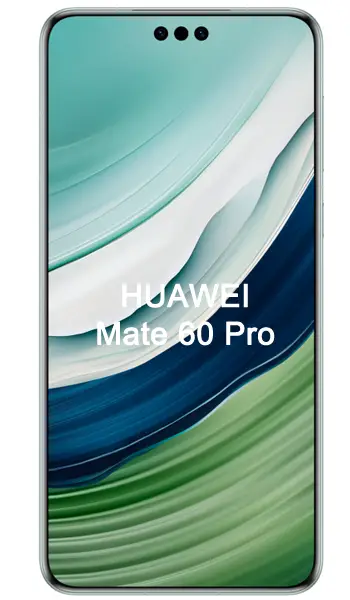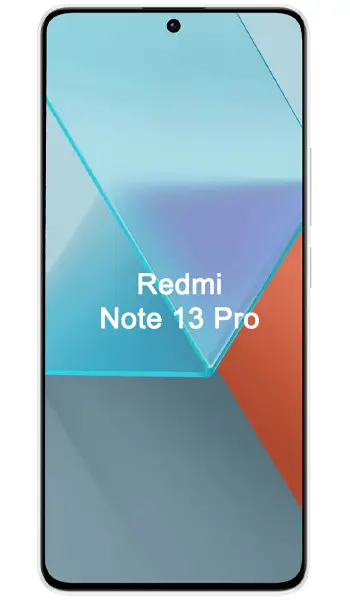Huawei Mate 60 Pro vs Xiaomi Redmi Note 13 Pro 5G Comparison and Differences
Smartphone 1

Huawei Mate 60 Pro
Smartphone 2

Xiaomi Redmi Note 13 Pro 5G
Smartphone 3
Huawei Mate 60 Pro or Xiaomi Redmi Note 13 Pro 5G Specs Comparison
or
 Common specs
Common specs
| Brand and model | Huawei Mate 60 Pro | Xiaomi Redmi Note 13 Pro 5G | |
| Rating | (+) | (+) | |
| Release date | 2023, August 29 | 2023, September 21 | |
| Dimensions (HxWxD) | 163.7 x 79 x 8.1 mm | 6.44 x 6.44 x 3.11 in | 161.2 x 74.2 x 8 mm | 6.35 x 6.35 x 2.92 in | |
| Weight | 225 g | 7.94 oz | 187 g | 6.6 oz | |
| Body Build | Glass front, aluminum frame, glass back | Corning Gorilla Glass | |
| Case | buy from Amazon | buy from Amazon | |
| Colors | Black, White, Green, Purple | Midnight Black, Aurora Purple (Coral Purple), Ocean Teal, Arctic White | |
| Battery | 5000 mAh, Li-Po, non-removable | 5100 mAh, Li-Po, non-removable | |
| Approximate price | 890 EUR | 320 EUR | |
| Check price | from Amazon | from Amazon |
 Screen
Screen
| Technology | LTPO OLED | AMOLED | |
| Touchscreen | capacitive touchscreen | capacitive touchscreen | |
| Display colors | 1B | 68B | |
| Screen size | 6.82" in | 6.67" in | |
| Screen area | 114.4 cm2 | 107.4 cm2 | |
| Screen format | 19.5:9 (height:width) | 20:9 (height:width) | |
| Screen to body ratio | 88.5% | 89.7% | |
| Screen resolution | 1260 x 2720 px | 1220 x 2712 px | |
| Screen PPI /points per inch/ | 440 PPI | 446 PPI | |
| Screen protection | Huawei Kunlun Glass 2 | Corning Gorilla Glass Victus | |
| Other specs | - 120Hz | - 120Hz, Dolby Vision, 500 nits (typ), 1200 nits (HBM), 1800 nits (peak) -Always-on display |
|
| Screen protector | buy from Amazon | buy from Amazon |
 Camera and Video
Camera and Video
| Rear camera, main | 50 MP, Triple | 200 MP, Triple | |
| Camera specs | -50 MP, f/1.4-f/4.0, 24mm (wide), PDAF, Laser AF, OIS -48 MP, f/3.5, 90mm (periscope telephoto), PDAF, OIS, 3.5x optical zoom -12 MP, f/2.2, 13mm, 120˚ (ultrawide), PDAF |
-200 MP, f/1.7, 23mm (wide), 1/1.4", 0.56µm, multi-directional PDAF, OIS -8 MP, f/2.2, 118˚ (ultrawide) -2 MP, f/2.4, (macro) |
|
| Functions | LED flash, panorama, HDR | Dual-LED dual-tone flash, HDR, panorama | |
| Video | 4K@30/60fps, 1080p@30/60/120/240/480fps, 720p@960fps, 720p@3840fps, HDR, gyro-EIS | 4K@30fps, 1080p@30/60/120fps, gyro-EIS | |
| Front camera, selfie | 13 MP, Single | 16 MP, Single | |
| Specifications | 13 MP, f/2.4, 18mm (ultrawide) TOF 3D, (depth/biometrics sensor) |
16 MP, f/2.4, (wide), 1/3.06", 1.0µm | |
| Functions | HDR, panorama | HDR | |
| Video | 4K@30/60fps, 1080p@30/60/240fps | 1080p@30/60fps |
 Performance
Performance
| Operating system - OS | HarmonyOS 4.0 (China) | Android 13, upgradable to Android 14, HyperOS | |
| Chipset | - Kirin 9000S (7 nm) | - Qualcomm SM7435-AB Snapdragon 7s Gen 2 (4 nm) | |
| CPU | - Octa-core (1x2.62 GHz Taishan Big & 3x2.15 GHz Taishan Mid & 4x1.53GHz Cortex-A510) | - Octa-core (4x2.40 GHz Cortex-A78 & 4x1.95 GHz Cortex-A55) | |
| GPU | Maleoon 910 MP4 | Adreno 710 | |
| External memory | NM (Nano Memory), up to 256GB (uses shared SIM slot) | No | |
| Internal memory | 256GB 12GB RAM, 512GB 12GB RAM, 1TB 12GB RAM | 128GB 8GB RAM, 256GB 8GB RAM, 256GB 12GB RAM, 512GB 12GB RAM, 512GB 16GB RAM |
 Benchmark
Benchmark
| Antutu 10 Total | 590741 | ||
| Antutu 10 CPU | 187412 | ||
| Antutu 10 GPU | 119632 | ||
| Antutu 10 Mem | 133411 | ||
| Antutu 10 UX | 187412 | ||
| Antutu 9 Total | 769211 | ||
| GeekBench 5 Single Core | 1044 | 1012 | |
| GeekBench 5 Multi-Core | 3897 | 2943 |
 Communication and Connectivity
Communication and Connectivity
| SIM card | Hybrid Dual SIM (Nano-SIM, dual stand-by) | Nano-SIM, eSIM or Dual SIM (Nano-SIM, dual stand-by) | |
| Network | GSM / CDMA / HSPA / CDMA2000 / LTE / 5G | GSM / CDMA / HSPA / CDMA2000 / LTE / 5G | |
| Bands | -2G - GSM 850 / 900 / 1800 / 1900 - SIM 1 & SIM 2 CDMA 800 -3G - HSDPA 800 / 850 / 900 / 1700(AWS) / 1900 / 2100 CDMA2000 1x -4G - LTE -5G - SA/NSA |
-2G - GSM 850 / 900 / 1800 / 1900 - SIM 1 & SIM 2 CDMA 800 -3G - HSDPA 800 / 850 / 900 / 1700(AWS) / 1900 / 2100 - International HSDPA 850 / 900 / 2100 - India CDMA2000 1x -4G - 1, 2, 3, 4, 5, 7, 8, 12, 13, 17, 18, 19, 20, 26, 28, 32, 38, 40, 41, 66 - International 1, 3, 5, 8, 38, 40, 41, 77, 78 - India 1, 3, 5, 8, 19, 34, 38, 39, 40, 41 - China -5G - 1, 3, 5, 7, 8, 20, 28, 38, 40, 41, 66, 77, 78 SA/NSA - International 1, 3, 5, 8, 28, 38, 40, 41, 77, 78 SA/NSA - India 1, 3, 5, 8, 28, 38, 41, 77, 78 SA/NSA - China |
|
| Speed | HSPA, LTE-A, 5G | HSPA, LTE-A (CA), 5G | |
| GPRS | Yes | Yes | |
| Edge | Yes | Yes | |
| Wi-Fi | Wi-Fi 802.11 a/b/g/n/ac/6, dual-band, Wi-Fi Direct | Wi-Fi 802.11 a/b/g/n/ac, dual-band | |
| GPS | GPS (L1+L5), GLONASS (L1), BDS (B1I+B1c+B2a+B2b), GALILEO (E1+E5a+E5b), QZSS (L1+L5), NavIC (L5) | GPS, GLONASS, BDS (B1I+B1c), GALILEO, QZSS | |
| NFC | Yes | Yes (market/region dependent) | |
| USB | USB Type-C 3.1, OTG, DisplayPort 1.2 | USB Type-C 2.0, OTG | |
| Bluetooth | 5.2, A2DP, LE | 5.2, A2DP, LE |
 Music and Audio
Music and Audio
| Radio | No | No | |
| Headphone jack | No | Yes | |
| Others | - 32-bit/384kHz audio | - 24-bit/192kHz Hi-Res & Hi-Res wireless audio |
 Other features
Other features
| Sensors | - Face ID, fingerprint (under display, optical), accelerometer, gyro, proximity, barometer, compass, color spectrum , Infrared port | - Fingerprint (under display, optical), accelerometer, gyro, compass, proximity , Infrared port | |
| Other extras |
- BDS Satellite Calling and Message - 88W Fast charging, 100% in 30 min -50W Wireless charging -20W Reverse wireless charging - IP68 dust/water resistant (up to 6m for 30 min) |
- 67W Fast charging, Power Delivery 3.0, 50% in 17 min, 100% in 44 min - IP54, dust and splash resistant |
Reviews and Opinions on Huawei Mate 60 Pro and Xiaomi Redmi Note 13 Pro 5G
If you had to recommend one of these phones to a friend, which one would it be and why? Share your arguments using the Add Opinion button!

